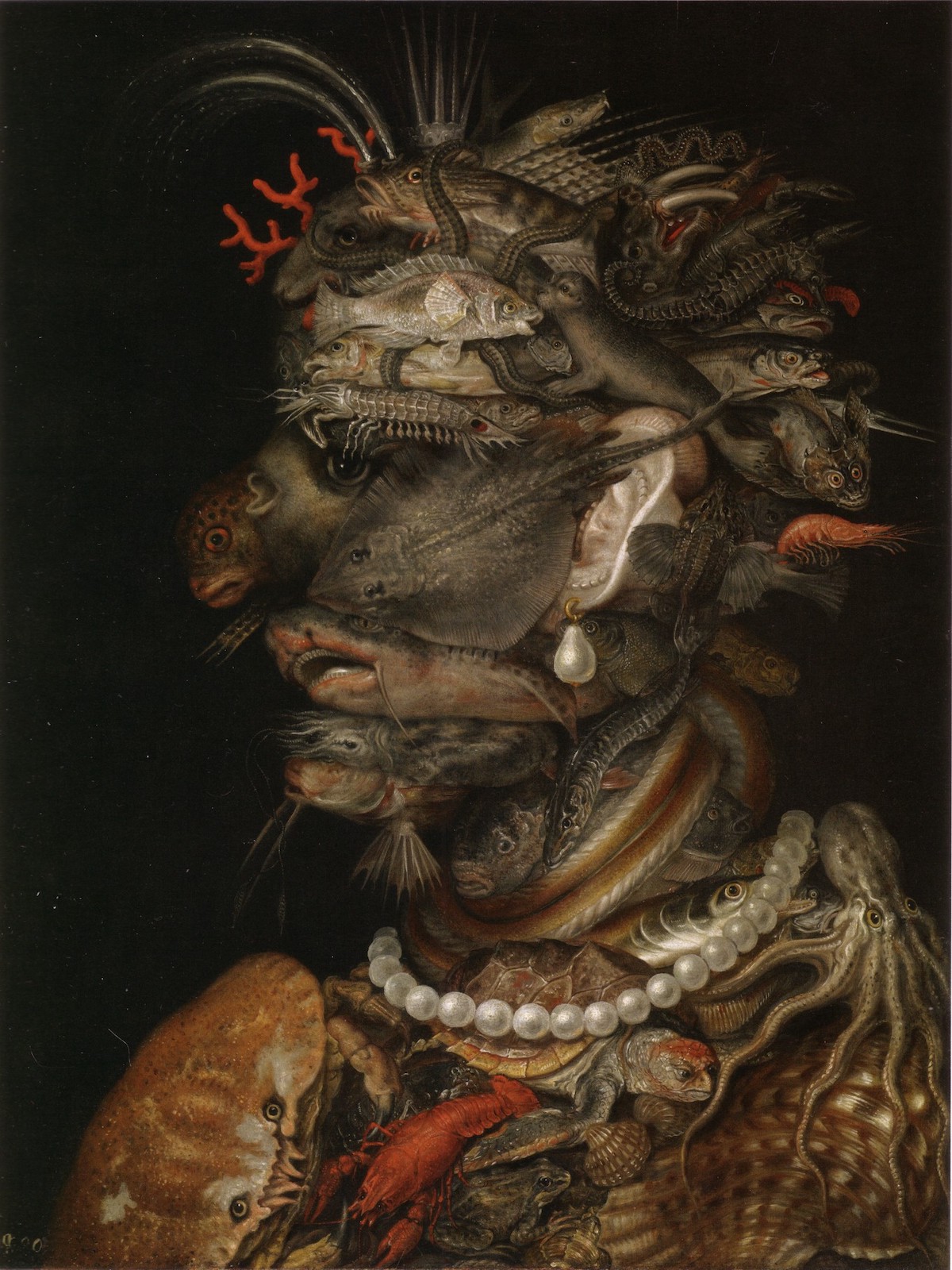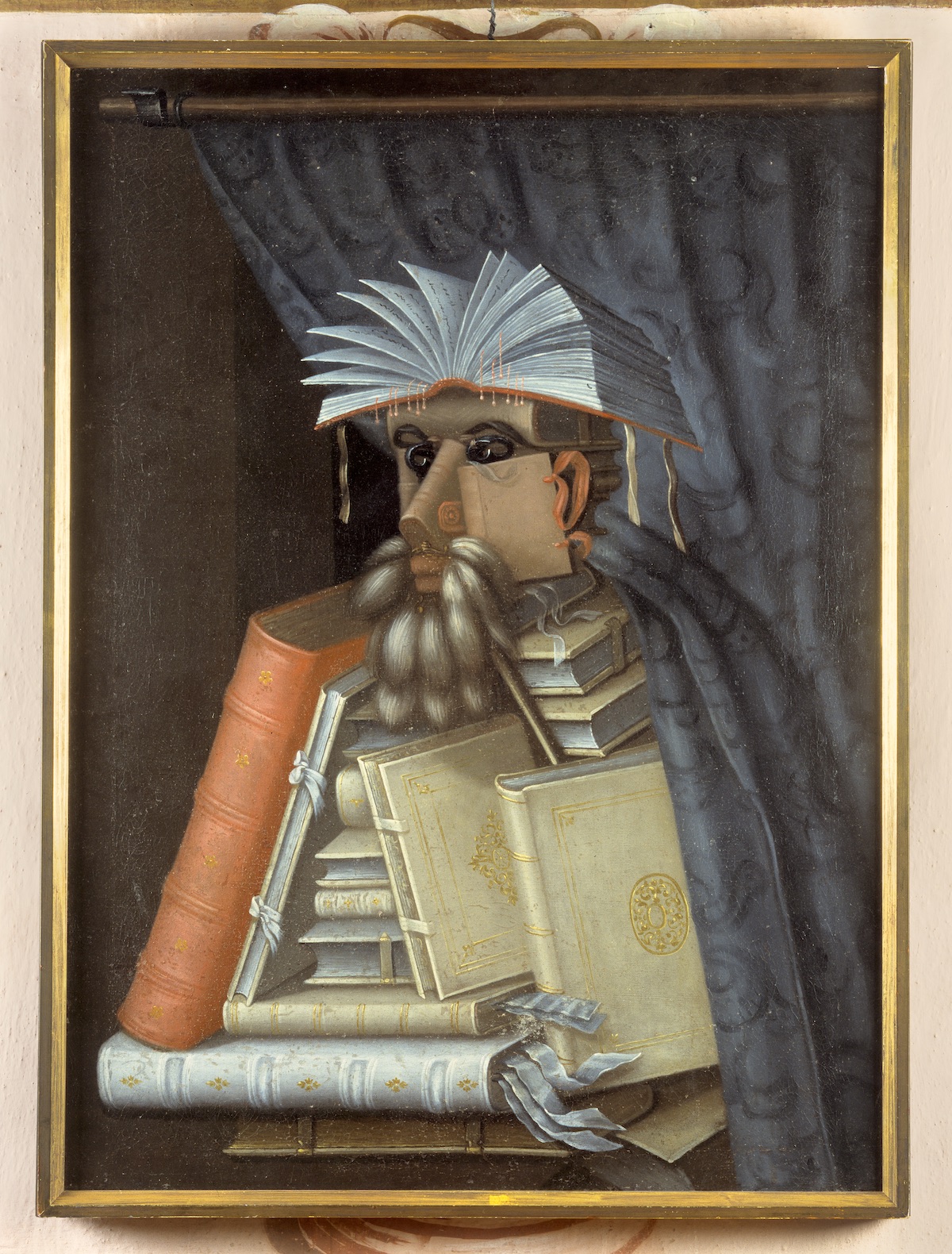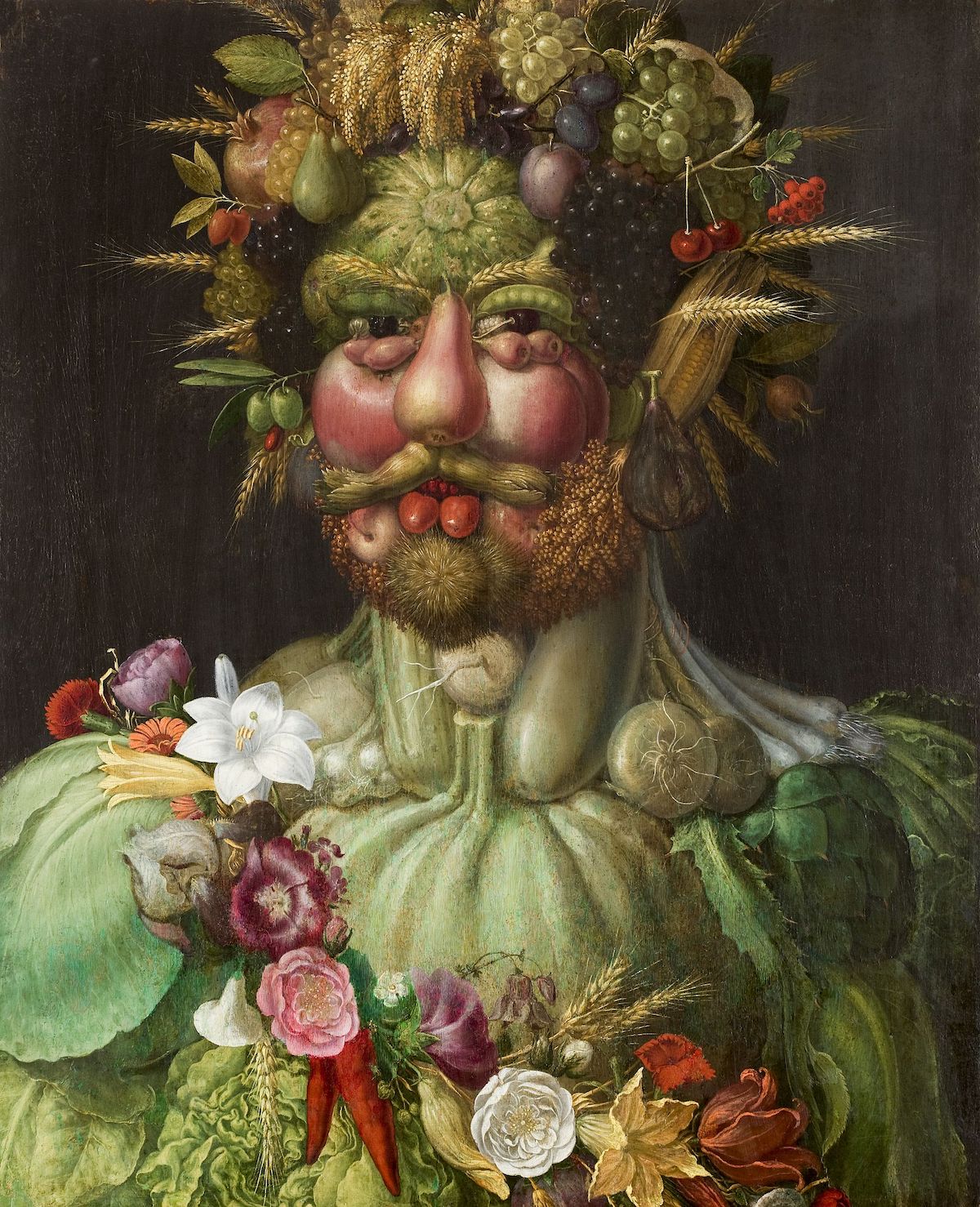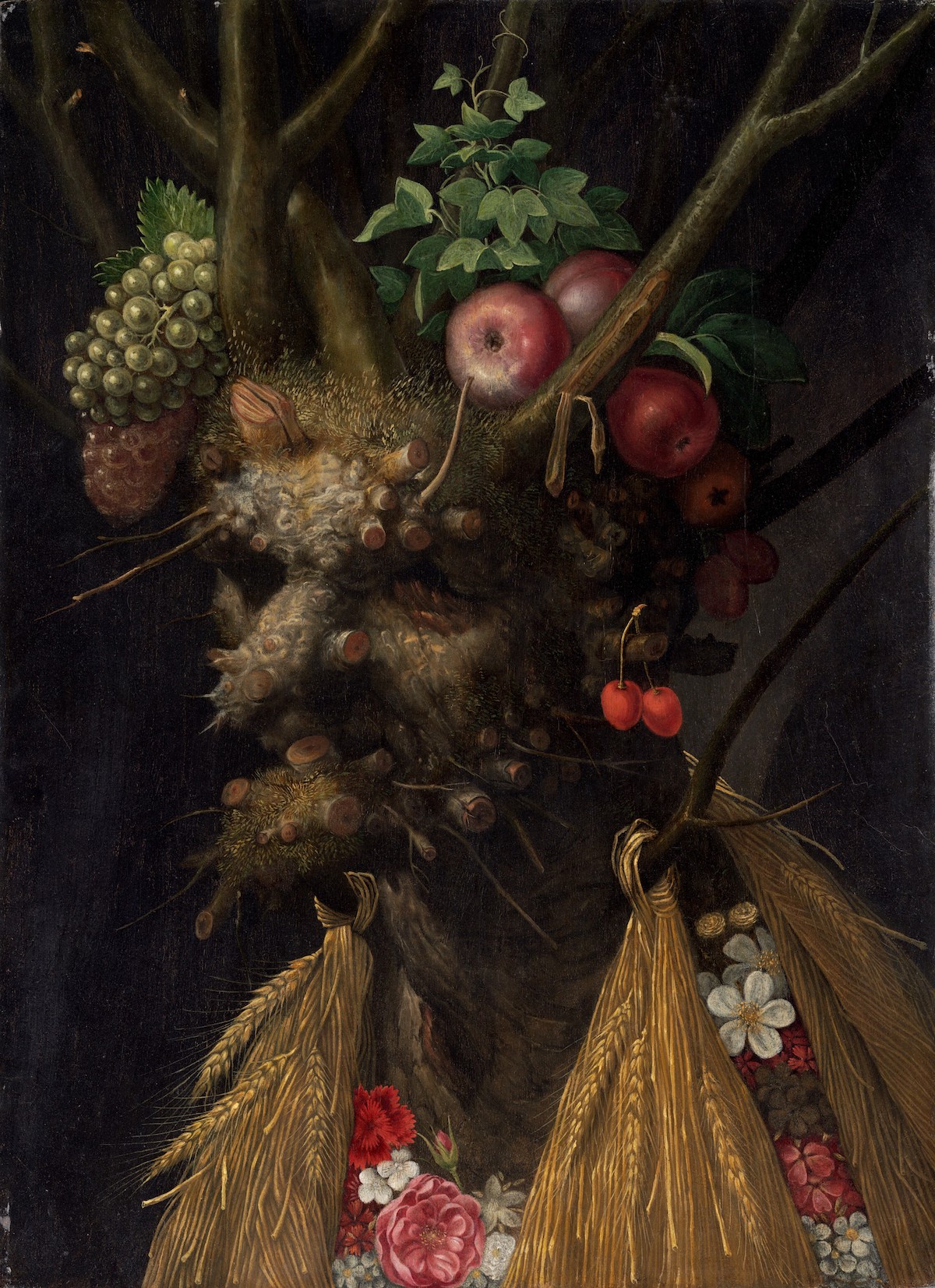How Giuseppe Arcimboldo Reimagined Portraiture in 16th-Century Europe
Few artists have painted portraits so beguiling as Giuseppe Arcimboldo, an Italian painter of the late Renaissance who made a name for himself in the courts of the Holy Roman Empire by creating painstakingly detailed images of various sitters. In place of the richly detailed facial features one typically expects in portraiture, there are clever arrangements of fruits, vegetables, plants, animals, and other elements. Both psychologically acute and scientifically accurate, Arcimboldo’s portraits were celebrated by his patrons and contemporaries, expanding traditional notions about what portraiture was or ought to be. The guide below traces Arcimboldo’s career and highlights some of his most peculiar and extraordinary creations.
Arcimboldo was born into a family of painters.
Before Arcimboldo redefined portraiture, he got his start working on two famed Italian buildings. Born in Milan in 1526 or 1527, Arcimboldo’s father worked for the Veneranda Fabbrica del Duomo di Milano, an organization that oversaw the construction and development of the city’s towering cathedral and exists today as part of preservation and restoration efforts associated with the structure. Some of Arcimboldo’s earliest artworks were designs for stained glass windows at the Duomo di Milano and frescoes at the Duomo di Monza. It was not until the painter was around 36 years old that he would leave Italy to become a court painter for the Hapsburg emperors Maximilian II in Vienna and Rudolf II in Prague. During his 25 years working in the courts of the Holy Roman Empire, Arcimboldo would continue to design stained glass windows, tapestries, and theater costumes.

Giuseppe Arcimboldo, Water, 1566, oil on panel.
Wikimedia Commons
The artist would develop his madcap style during his tenure as a court portraitist.
Maximilian II held a fascination with the natural world, and this interest in biology and other fields lured scientists and philosophers to his court. No surprise, then, that Arcimboldo’s first projects for Maximilian II—the series “The Four Seasons,” which he started in 1563, and “The Elements,” completed in 1566—bore out that love of science. “The Four Seasons” comprises four profile portraits of figures forged from intricate arrangements of natural materials like fruits, vegetables, flowers, and plant life specific to either summer, fall, winter, or spring. Arcimboldo took a similar approach to the four-part series “The Elements,” which features haunting depictions of figures composed respectively of fire and gold, multifarious sea creatures and pearls, clusters of birds, and various fauna. The artist’s imaginative and highly detailed portraits were met with praise inside Hapsburg courts and beyond, and he had begun to establish a name for himself among Renaissance artists. Arcimboldo created reproductions of the paintings in the seasons series on account of its wide acclaim. Both “The Four Seasons” and “The Elements” would be put on view in Maximilian II’s kunstkammer of artworks, antiquities, and natural wonders. Art historian Thomas DaCosta Kaufmann, who authored the 2009 book Arcimboldo: Visual Jokes, Natural History, and Still-Life Painting, has said that such works conveyed “the majesty of the ruler, the copiousness of creation and the power of the ruling family over everything.”

Giuseppe Arcimboldo, The Libarian, ca. 1566, oil on canvas.
Wikimedia Commons
Arcimboldo’s subjects grow more varied in the years to come.
In the following years, the artist created portraits of specific professions and biblical figures while continuing to further his interest in natural phenomena. Among his most idiosyncratic paintings are The Librarian (ca. 1566), which some believe depicts the Austrian humanist, historian, and physician Wolfgang Lazius and shows a stoic, anthropomorphic pyramid of tomes; portraits of Adam and Eve from 1578 that show the faces of a woman and a man composed of groupings of human bodies; and The Cook (ca. 1570), which shows a serving dish presented atop a wooden table that, when turned upside down, reveals a menacing face.

Giuseppe Arcimboldo, Vortumnus (Vertumno), ca. 1590, oil on canvas.
WIKIMEDIA COMMONS
Some of the artist’s final works are his most iconic ones.
Having returned to Milan in 1587 and nearing the end of his life, Arcimboldo continued painting meticulous groupings of lush fruits and vegetables and distinctive plants. One of the artist’s most famous works from that period is Vortumnus (Vertumno), produced around 1590 and named for the Roman god of the seasons. The work shows Rudolf II as a formidable figure gazing intently at the viewer, his body formed by hearty gourds, blooming flowers, glimmering grapes, and more. Four Seasons in One Head (ca. 1590), which some art historians consider a self-portrait, features an angular face cut from a withered tree trunk and adorned with a pair of cherries on its ear; apples, grapes, and leaves atop its head; and flowers on its bust. Scholars at the National Gallery of Art in Washington, D.C., which acquired the painting in 2010, have argued that the work stands out among Arcimboldo’s body of work as an earnest contemplation of mortality.

Giuseppe Arcimboldo, Four Seasons in One Head, ca. 1590, oil on panel.
Courtesy National Gallery of Art
Arcimboldo is celebrated for the striking unconventionality of his work.
The artist died in Milan in 1593. Some of Arcimboldo’s paintings were taken from Rudolf II’s collection in Prague by Swedish forces during the Thirty Years’ War, and a handful of his paintings, including The Librarian, Vortumnus (Vertumno), and The Cook, are part of Swedish collections today. The artist’s work can also be found in the Kunsthistorisches Museum in Vienna, the Louvre in Paris, the Real Academia de Bellas Artes de San Fernando in Madrid, and other international institutions. He is often credited as a source of inspiration for Surrealist artists, and some recent shows dedicated to the artist took place in 2017 at the Palazzo Barberini in Rome and the Museo de Bellas Artes de Bilbao in Spain.
Published at Thu, 01 Oct 2020 14:53:04 +0000
